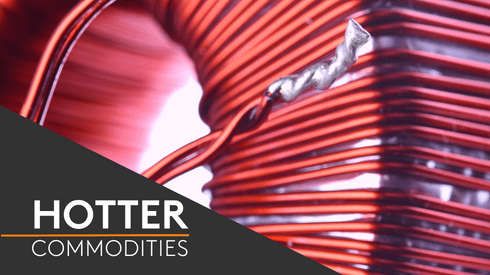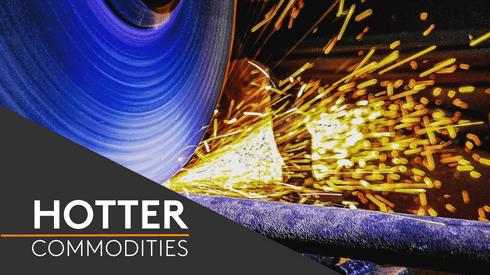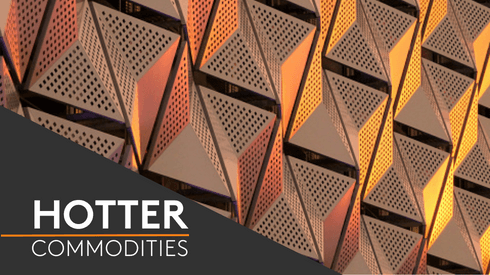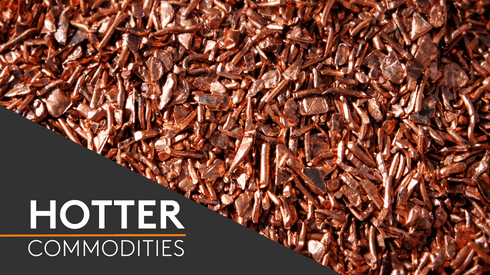Modern economies currently rely on fossil fuels, so the energy transition will depend on key materials such as cobalt, lithium, nickel, graphite and copper, which are needed to support targets such as the electrification of mobility.
According to Fastmarkets’ battery raw materials research team, in 2021 China alone produced 76% of the world’s processed cobalt and 72% of its processed lithium.
The EU has set ambitious targets for its sustainable energy transition by 2030, intending to cut greenhouse gas emissions by 40% from their 1990 levels, and with renewable sources providing at least 32% of the energy mix and at least a 32.5% improvement in energy efficiency.
According to data published by the EU, transport is responsible for almost one-quarter of Europe’s greenhouse gas emissions and is the main cause of air pollution in cities. As a result, the EU has been financially supporting the adoption of electric vehicles (EVs) in recent years.
The transition in Europe and the United States to green, digital, resilient and globally competitive economies has prompted policymakers in both regions to take steps toward reducing their over-dependence on other countries for their energy transition targets.
“With the transition of Europe’s industry to climate-neutrality, there is the risk of the dependence on fossil fuels being replaced with reliance on non-energy raw materials,” a recent EU industrial strategy update said.
“Access to resources is fundamental for the entire EU industry, and central to Europe’s ambition to deliver on the Green Deal, and to ensure the digital transformation of the EU economy,” it added. “Because the EU does not produce all the raw materials that are necessary to meet our demands, EU industry faces global competition in access to raw materials.”
Battery value chain
Given the importance of lithium-ion (Li-ion) batteries, the European Commission has adopted a strategic action plan to develop a European value chain. As a response, public and private investments have been mobilized at scale over recent years.
Among its key initiatives, the European Battery Alliance, launched in 2017, is supporting the development of an innovative, competitive and sustainable battery value chain in Europe. In particular, it is focusing on addressing the lack of battery manufacturing capacity in the EU.
China at present dominates the supply chain for the EV manufacturing industry, because it has key refining capacity for raw materials critical for EV batteries such as lithium and cobalt.
Key steps that have already been taken are the development of local extraction facilities for lithium in both Europe and the US, the set-up of localized battery giga factories and the development of resource recycling.
Recycling is likely to play an increasingly relevant role with more adoption of EVs and a consequent rise in the number of batteries that reach their end of life.
Among the lithium mining projects in Europe that have secured a number of buyers for their product is Vulcan Energy.
Vulcan’s combined geothermal energy and lithium brine resource is in the Upper Rhine valley in southern Germany, Europe’s largest lithium resource. Vulcan plans to commence lithium production in 2024, it recently said.
“Recycling will play a huge part in providing a local supply of battery raw materials because spent [lithium-ion batteries] will probably have to be recycled locally, but it will still take considerable time to get to the stage where enough spent batteries are available,” William Adams, head of battery raw materials research at Fastmarkets, said.
“Until then, the regions need to develop, and are developing, mines where the resources are available locally, but many projects face environmental opposition,” he said. “Communities need to work out whether it makes sense to mine now to build up the required materials that can form the circular economy of tomorrow.”
China dominates the mid-stages in refining lithium and other key raw materials into the chemicals that are used in EVs, although China itself relies heavily on battery raw materials imported from other countries, such as cobalt, lithium and nickel.
One of the latest announcements made by junior cleantech companies intending to create a battery value chain in Europe concerned the recent signing of a non-binding memorandum of understanding between Canada-based Rock Tech Lithium and the government of Romania for the construction of a lithium hydroxide converter plant in the European country.
The parallel that comes to mind in the current geopolitical environment is with Europe’s dependence on Russia for its energy security, because Russia is a key exporter of fossil fuels to the European Economic Area.
According to the International Energy Agency, Russia accounted for around 45% of the EU’s gas imports in 2021 and almost 40% of its gas consumption.
This highlights more strongly the fact that energy transition will require the EU to develop security in its energy needs and diversification of key raw materials, while establishing a local battery value chain. This is because lithium-ion batteries will be critical in meeting the energy transition targets, due to the role they play in mobility electrification and energy storage.
Geopolitical effect on cobalt, nickel prices
At present, we are seeing the immediate consequences of the Russian invasion of Ukraine in the cobalt and nickel markets.
Russia is a significant producer of both nickel and cobalt. In 2021, it produced 4,500 tonnes of cobalt metal at its Norilsk facilities.
The battery industry will face increasing headwinds on nickel availability and price, with the metal’s price reaching record levels of volatility in recent days.
The London Metal Exchange announced that it was suspending nickel trading on all its platforms on March 8 [LINK], after the price set a record high of $101,365 per tonne in the early hours of March 8, a 110% rise from Monday’s closing price of $48,078 per tonne.
Cobalt under pressure
Cobalt, a by-product of nickel processing, has also been feeling the pressure.
The cobalt market, which was already bullish in 2021, showed further volatility in late February after Russia launched its invasion of Ukraine.
While the fundamentals of the market have been strong since the beginning of the year, owing to progressive supply tightness and expectations of growing demand, the specter of sanctions against Russia spurred further concern about a worsening international deficit in cobalt, if Russian units were out of reach for Western buyers.
Traders and suppliers told Fastmarkets that they would be unable to finance new purchases of Russia-produced cobalt, with Western sanctions restricting access to credit.
Consumers with strict requirements for particular brands have been forced to purchase at the top of the market, amid limited availability of product for spot sales. And concerns about further spill-overs from nickel to cobalt were shaping current market sentiment.
Fastmarkets’ price assessment for cobalt, standard grade, in-whs Rotterdam, rose to $37.50-38.90 per lb on March 9, up from $33.50-34.05 per lb at the beginning of the year.
“High nickel prices will definitely hurt battery demand and hurt cobalt – we have to be careful on that,” a cobalt supplier said.
“If the shortage of cobalt and nickel can slow down the production of lithium-ion batteries, then [less] lithium might be necessary. This could change the current dynamic in lithium prices,” a lithium buyer active in East Asia said.
Prices for lithium have been increasing sharply across the world, with demand outpacing expectations and available supply.
Fastmarkets assessed the price of lithium hydroxide monohydrate LiOH.H2O 56.5% LiOH min, battery grade, spot price cif China, Japan & Korea, at $67-70 per kg on March 10, up by 95.71% from the beginning of the year.






